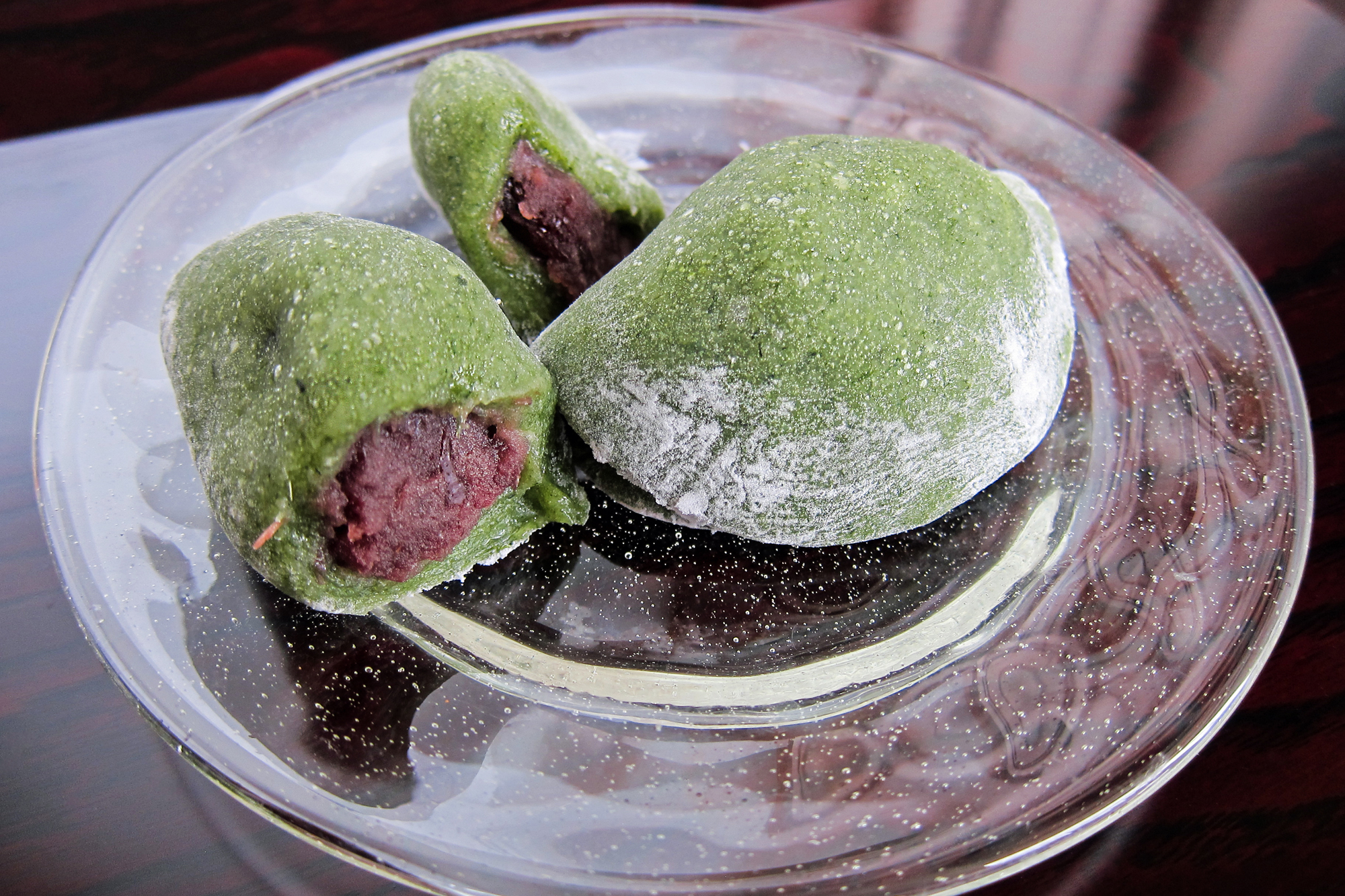Spring is a great time for fans of wagashi, traditional Japanese sweets. While many wagashi reflect the seasons all year long visually — especially the colorful, beautifully formed nerikiri created by skilled artisans — this is the time of year when you can taste, as well as see, the season as it progresses.
In March and early April, there are sakura-mochi that use salty, tangy preserved cherry blossoms as well as leaves for flavor. And later on in May, there are kashiwa-mochi, wrapped in woodsy kashiwa (oak) leaves, as well as chimaki, which use young green bamboo leaves as wrappers.
One of my favorite springtime wagashi is kusa-mochi, which means "grass mochi," also known as yomogi-mochi, made with the young leaves of yomogi — Artemisia princeps, sometimes called Japanese mugwort (it differs from European or common mugwort, Artemisia vulgaris). Kusa-mochi was originally made with a plant called hahako-gusa (Gnaphalium affine), which is one of the seven herbs of spring, and enjoyed by the nobility during the Heian Period (794-1185).



















With your current subscription plan you can comment on stories. However, before writing your first comment, please create a display name in the Profile section of your subscriber account page.